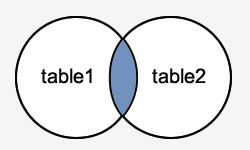SQL Server: Grant/Revoke Privileges
Learn how to grant and revoke privileges in SQL Server (Transact-SQL) with syntax and examples.
Description
You can GRANT and REVOKE privileges on various database objects in SQL Server. We'll look at how to grant and revoke privileges on tables in SQL Server.
Grant Privileges on Table
You can grant users various privileges to tables. These permissions can be any combination of SELECT, INSERT, UPDATE, DELETE, REFERENCES, ALTER, or ALL.
Syntax
The syntax for granting privileges on a table in SQL Server is:
GRANT privileges ON object TO user;
- privileges
The privileges to assign. It can be any of the following values:
Privilege Description SELECT Ability to perform SELECT statements on the table. INSERT Ability to perform INSERT statements on the table. UPDATE Ability to perform UPDATE statements on the table. DELETE Ability to perform DELETE statements on the table. REFERENCES Ability to create a constraint that refers to the table. ALTER Ability to perform ALTER TABLE statements to change the table definition. ALL ALL does not grant all permissions for the table. Rather, it grants the ANSI-92 permissions which are SELECT, INSERT, UPDATE, DELETE, and REFERENCES. - object
- The name of the database object that you are granting permissions for. In the case of granting privileges on a table, this would be the table name.
- user
- The name of the user that will be granted these privileges.
Example
Let's look at some examples of how to grant privileges on tables in SQL Server.
For example, if you wanted to grant SELECT, INSERT, UPDATE, and DELETE privileges on a table called employees to a user name smithj, you would run the following GRANT statement:
GRANT SELECT, INSERT, UPDATE, DELETE ON employees TO johnny;
You can also use the ALL keyword to indicate that you wish to grant the ANSI-92 permissions (ie: SELECT, INSERT, UPDATE, DELETE, and REFERENCES) to a user named johnny. For example:
GRANT ALL ON employees TO johnny;
If you wanted to grant only SELECT access on the employees table to all users, you could grant the privileges to the public role. For example:
GRANT SELECT ON employees TO public;
Revoke Privileges on Table
Once you have granted privileges, you may need to revoke some or all of these privileges. To do this, you can run a revoke command. You can revoke any combination of SELECT, INSERT, UPDATE, DELETE, REFERENCES, ALTER, or ALL.
Syntax
The syntax for revoking privileges on a table in SQL Server is:
REVOKE privileges ON object FROM user;
- privileges
It is the privileges to assign. It can be any of the following values:
Privilege Description SELECT Ability to perform SELECT statements on the table. INSERT Ability to perform INSERT statements on the table. UPDATE Ability to perform UPDATE statements on the table. DELETE Ability to perform DELETE statements on the table. REFERENCES Ability to create a constraint that refers to the table. ALTER Ability to perform ALTER TABLE statements to change the table definition. ALL ALL does not revoke all permissions for the table. Rather, it revokes the ANSI-92 permissions which are SELECT, INSERT, UPDATE, DELETE, and REFERENCES. - object
- The name of the database object that you are revoking privileges for. In the case of revoking privileges on a table, this would be the table name.
- user
- The name of the user that will have these privileges revoked.
Example
Let's look at some examples of how to revoke privileges on tables in SQL Server.
For example, if you wanted to revoke DELETE privileges on a table called employees from a user named anderson, you would run the following REVOKE statement:
REVOKE DELETE ON employees FROM king;
If you wanted to revoke ALL ANSI-92 permissions (ie: SELECT, INSERT, UPDATE, DELETE, and REFERENCES) on a table for a user named king, you could use the ALL keyword as follows:
REVOKE ALL ON employees FROM king;
If you had granted SELECT privileges to the public role (ie: all users) on the employees table and you wanted to revoke these privileges, you could run the following REVOKE statement:
REVOKE SELECT ON employees FROM public;

No comments:
Post a Comment